7 November 2015. Hendrie Valley, Burlington ON. My Bird of the Day today was a Fox Sparrow found almost at the start of my census walk, but it had a good run for its money later in the morning from an Eastern Screech Owl. The Fox Sparrow was scratching for seed among the fallen leaves along with a small group of Dark-eyed Juncos. If it can be said that any sparrow is gorgeous, then it surely applies to a Fox Sparrow. Wher most sparrows are any shade of brown: crown, cheeks, back, wings and tail, Fox Sparrows are a rich rufous brown – like a fox; even the usual breast spots and streaks are rich, bold and almost showy.
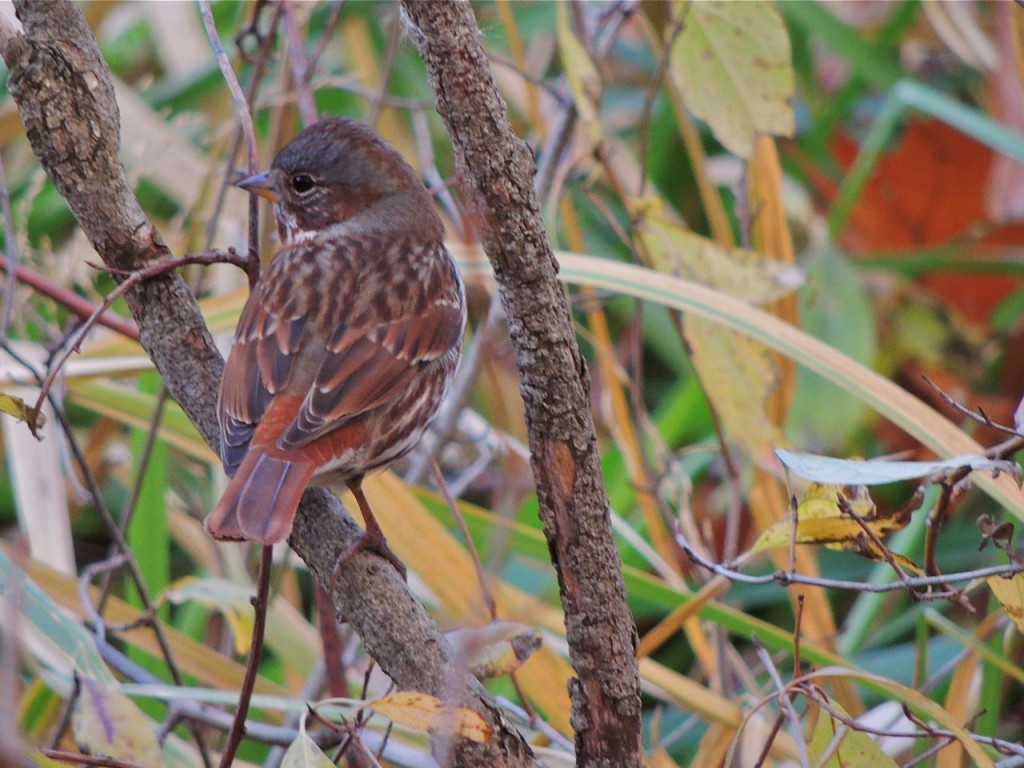
The census included a small but nevertheless satisfying selection including: a small flight of American Robins, Black-capped Chickadees by the dozen, four lingering White-throated Sparrows, a Belted Kingfisher and a handful of Red-bellied Woodpeckers.
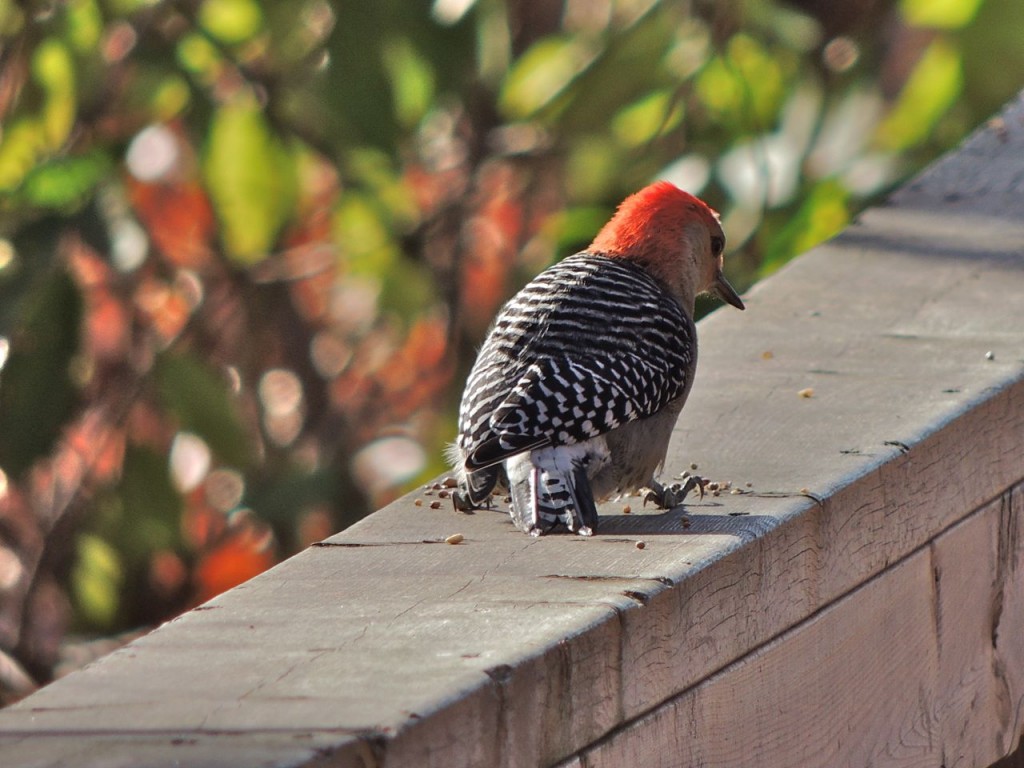
I often refer to doing a census, so it’s perhaps worth some explanation. The purpose of regular censuses is to build a large body of data to reveal and maybe understand long-term population trends. The count from any one day taken on its own is of little consequence, except perhaps when something special turns up, in which case well, you’ve got a noteworthy bird record. But with ten years and more of accumulated census data you can start to see development of population trends. Clearly a census project is of increasing value the longer it continues.
This year at the Royal Botanical Gardens (RBG) in Hamilton and Burlington, Ontario, we have started such a bird population study by completing censuses at least three times per week over the four spring and fall months: April and May, and September and October. Each census walk is completed along a defined route in areas of great habitat diversity; our task is to count all birds seen and heard. (Find out more by clicking on this link)
Apart from the RBG project, I have for many years been volunteering at a bird observatory at Ruthven Park in Cayuga, Ontario. Whenever I’m there I usually complete the daily census. Ruthven’s observatory (more here) operates daily in those same four months and has done so for two decades, its census protocol is the model for the new RBG project.
Conducting a census sharpens my birding skills, I get to know and anticipate individual birds or pairs and it broadens my appreciation and understanding of the natural world; need I add that I love it?
But back to today. Heading home after my census, I stopped at a marina to see if there were any, or many, newly arrived winter ducks on the large industrial harbour that defines our area. As I arrived I saw a group of Saturday strollers staring at something several feet up into a rather forlorn willow. Right away I knew what had got their attention; an Eastern Screech Owl.
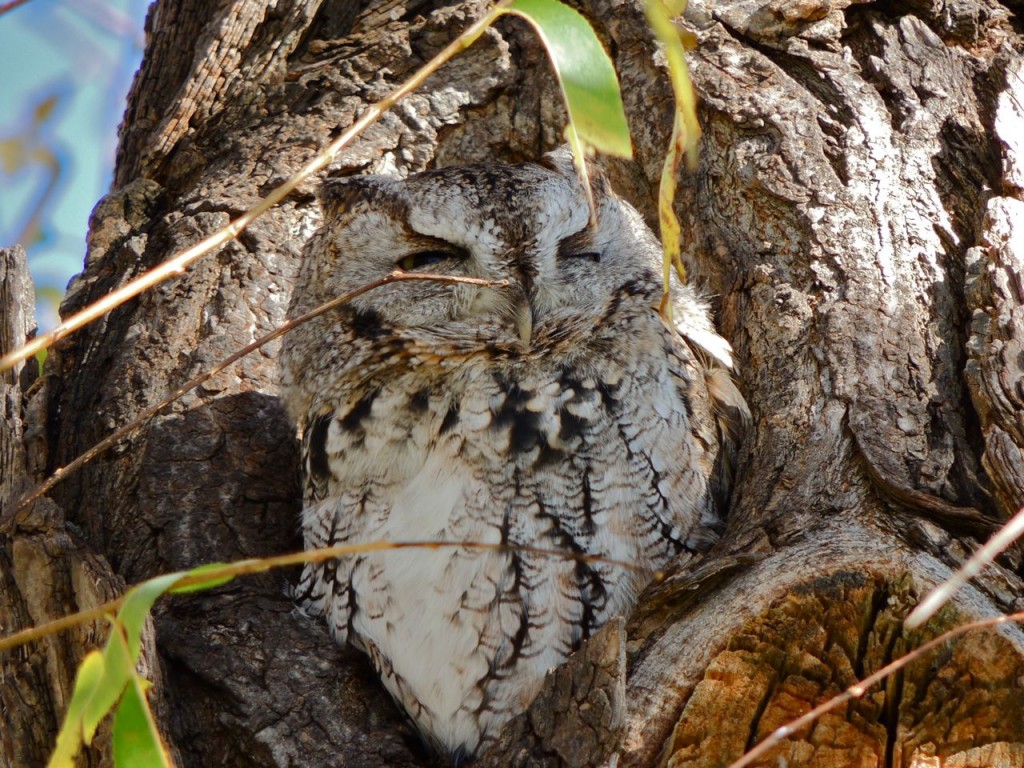
For the cold months of the year, Screech Owls seek the shelter of a south or west-facing cavity, usually a hole in a tree but sometimes a nest box. When the sun shines, or maybe just when they feel like it, the birds sit up at the entrance, eyes closed to a slit, and while away the day. Shortly after sunset they leave the hole to do what owls do at night and return to their hideout just before sunrise. During spring and summer months, other than using a suitable cavity as a nest site, they are content to spend their daylight hours hidden in the thickness of trees.
My early Fox Sparrow had stolen the day but this afterthought Eastern Screech Owl was a special treat.
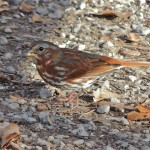
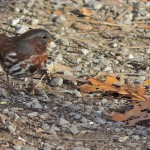
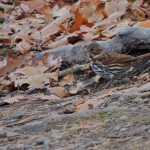
Hi! Always enjoy your blog! Nice to see our ‘friend’ has returned to the same tree at the marina Happy birding!
Happy birding!